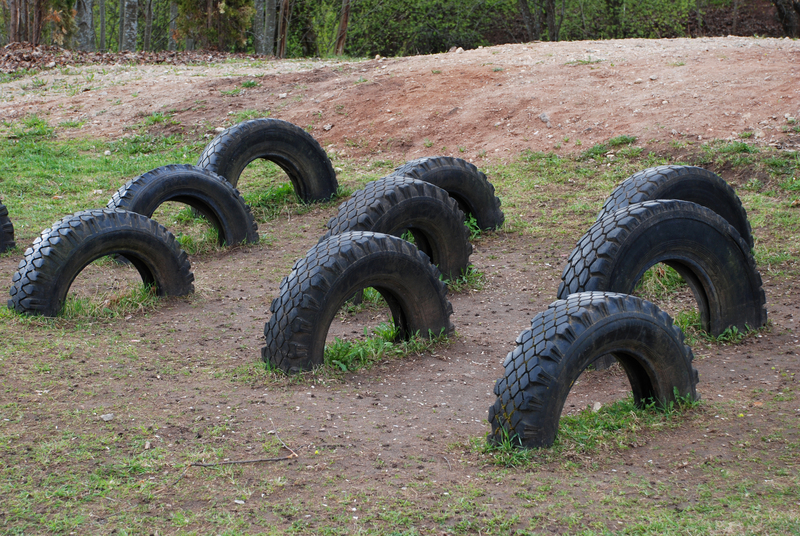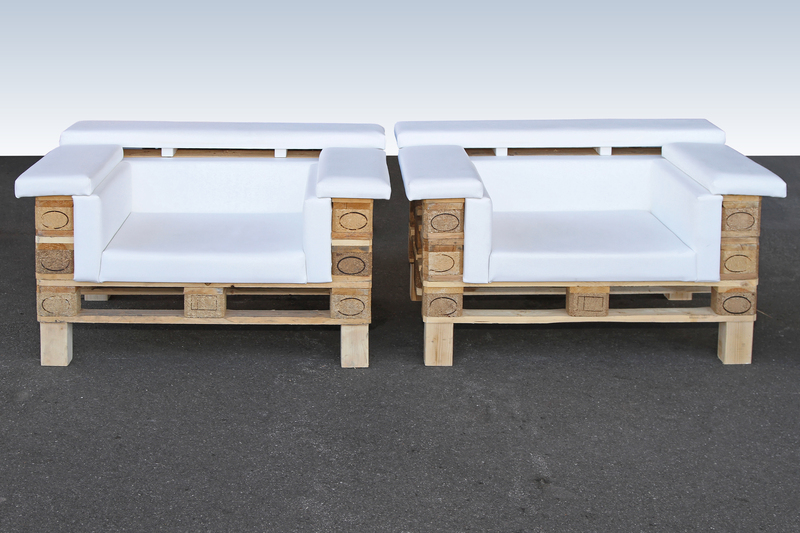Crafting Wonders from Unwanted Goods via Upcycling: Transforming Trash Into Treasure
Welcome to the fascinating world of upcycling -- the creative process that reinvents what many consider "unwanted goods" into objects of beauty, function, and inspiration. In today's eco-conscious society, upcycling stands as a beacon of sustainability, innovation, and artistic flair. This article delves deep into the many facets of crafting wonders from discarded items through upcycling, offering expert insights, tips, project ideas, and an understanding of this transformative art form.

What is Upcycling?
At its core, upcycling is the process of converting waste materials, by-products, or discarded objects into new products of higher quality or value. Unlike recycling, which often involves breaking down materials for reuse, upcycling involves imaginatively reworking unwanted goods into something functional or decorative without degrading their original materials.
Key Differences: Upcycling vs. Recycling
- Upcycling adds value, improving quality or appearance.
- Recycling breaks down materials to produce raw material for new, often lower-quality products.
- Upcycled items are often unique, with a handmade or artisanal touch.
- Upcycling requires less energy compared to recycling, making it a greener alternative.
Why Upcycle? The Benefits of Upcycling Unwanted Goods
Upcycling is more than a creative hobby; it's a lifestyle that brings substantial environmental, economic, and personal rewards. Below are some compelling reasons to embrace upcycling:
- Environmental Impact: Upcycling reduces landfill waste and conserves natural resources by making use of existing materials.
- Energy Conservation: The process demands less energy than recycling or manufacturing new products from scratch.
- Personal Expression: Transforming unwanted goods into unique items reflects individual creativity and style.
- Cost-Effective: Upcycling saves money by leveraging materials already at hand.
- Encourages Innovation: Solving the puzzle of turning 'junk' into functional art sparks problem-solving skills and creativity.
Environmental Benefits of Upcycling
According to recent studies, the world produces over 2 billion tonnes of municipal solid waste annually, with a significant portion being household items, furniture, clothing, and packaging that could be repurposed through upcycling. By reducing the need for new materials, upcycling plays a vital role in cutting greenhouse gas emissions and shrinking our ecological footprint.
Popular Upcycling Ideas: Give New Life to Old Items
The possibilities in upcycling are as boundless as your imagination. Here are some inspiring ways to begin crafting wonders from unwanted goods:
1. Upcycled Furniture Projects
- Old Doors to Tables: Repurpose a solid wooden door as a rustic dining or coffee table with minimal woodworking.
- Dresser to Bookshelf: Transform a dated dresser into open shelving, storage units, or even a bench with extra compartments.
- Wooden Pallets to Outdoor Loungers: Create garden seating using stacked, sanded, and painted pallets for a contemporary look.
2. Clothing and Textile Upcycling
- T-Shirts to Tote Bags: Cut and sew old tees into reusable shopping bags.
- Denim to Home Decor: Patchwork quilts, cushion covers, and organizers crafted from worn jeans have both charm and durability.
- Sweaters to Mittens: Upcycle woolen sweaters into cozy mittens or beanies for the colder months.
3. Creative Crafting With Packaging and Containers
- Glass Jars & Bottles: Used as vases, candle holders, or chic food storage containers after a good cleaning and some artistic touches.
- Plastic Bottles: Cut and paint them into planters, bird feeders, or even vertical gardens.
- Cardboard Boxes: Reinvent into storage bins, playhouses, magazine racks, or organizers with a little creativity.
4. Electronic and Gadget Upcycling
- CDs & DVDs: Mosaic art, wall hangings, or shimmering garden decorations.
- Motherboards: Fashion statement jewelry or high-tech coasters.
- Monitor Screens: Convert old screens into pet beds, aquariums, or shadow boxes.
The Artistic Aspect of Upcycling: From Trash to Treasure
Some of the world's greatest artists and designers have found inspiration in unwanted goods. Upcycling as an art form challenges our perception of value and beauty. For example, sculptures created from scrap metal, murals made from broken tiles, and lighting fixtures assembled from discarded kitchenware all showcase the power of upcycling to create not only useful but also aesthetically compelling pieces.
Famous Upcycling Artists
- Vik Muniz: Renowned for his detailed portraits crafted entirely from waste materials.
- Jane Perkins: Known for stunning mosaics made from plastic toys and discarded household objects.
- Sayaka Ganz: Creates dynamic sculptural works using salvaged plastics like utensils and toys.
How to Start Upcycling: Step-by-Step Guide for Beginners
You don't need extensive skills or expensive tools to begin upcycling unwanted goods into wonders. Here's a simple framework for getting started:
Step 1: Collect Unwanted Goods
- Inspect your home for items that are broken, outdated, or no longer used.
- Visit thrift shops, yard sales, and community swap events for hidden gems.
- Ask friends or neighbors for items they wish to discard.
Step 2: Get Inspired
- Browse Pinterest, YouTube, and upcycling blogs for creative project ideas.
- Join online forums or local upcycling groups for advice and collaboration.
- Visualize how unloved goods can be repurposed to fit your needs or style.
Step 3: Gather Tools and Materials
- Basic tools: scissors, sewing kit, hot glue gun, hammer, screwdrivers, paint, and brushes.
- Let the project dictate what additional tools and fittings you might require.
Step 4: Plan, Design, and Create
- Draft a sketch or plan before you start dismantling or assembling items.
- Work in a well-ventilated, safe environment, especially when sawing, drilling, or painting.
- Don't be afraid to make mistakes -- upcycling thrives on experimentation.
Step 5: Add Personal Touches
- Customize with colors, textures, and embellishments.
- Involve kids or family members for a collaborative creation experience.
- Document your process with photos -- sharing your work may inspire others!
Upcycling for Kids and Families: Fun and Sustainable Learning
Upcycling crafts are particularly well-suited for family activities and children's educational projects. Not only do they teach eco-friendly values, but they also encourage manual dexterity, creativity, and teamwork.
Easy Family-Friendly Upcycling Ideas
- Cardboard Tube Binoculars: Create imaginative play accessories using paper tubes and string.
- Egg Carton Animals: Turn empty cartons into colorful insects or imaginative animals with paint and paper.
- Plastic Bottle Planters: Let children decorate and plant small herbs in cut bottles, fostering gardening skills and environmental awareness.
Earning From Upcycling: Turning a Hobby Into a Business
The demand for unique upcycled products has never been higher, with eco-conscious consumers seeking alternatives to mass-produced goods. Many artisans and DIY enthusiasts have launched successful businesses by crafting and selling upcycled creations online and at local markets.
How to Launch Your Upcycled Goods Brand
- Identify your specialty -- home decor, furniture, jewelry, or clothing.
- Create a portfolio showcasing your best upcycled wonders.
- Sell your products on platforms like Etsy, Instagram, Facebook Marketplace, or at craft fairs.
- Promote your story: highlight sustainability and creative reuse in your branding.
- Engage with your audience through blogs, videos, and workshops.
Troubleshooting and Pro Tips for Successful Upcycling
- Start Small: Test your skills on simple projects before tackling challenging items.
- Think Long-Term: Aim for durability and practicality; the best upcycled goods are meant to last.
- Mix Materials: Combining wood, metal, and fabric can yield stunning results.
- Research: Some items (like electronics or treated wood) may require special safety precautions.
- Be Patient: Creative block is normal. Step back and return with fresh eyes if you get stuck.
Common Mistakes To Avoid
- Neglecting to clean and prep materials can lead to poor results.
- Using improper adhesives or finishes may affect durability.
- Ignoring structural integrity can result in unsafe or impractical goods.
- Trying to replicate others' work exactly may stifle your own creativity.

Inspiring Upcycling Success Stories
Many individuals and communities around the world are proving that crafting wonders from unwanted goods can create lasting, positive change.
- TerraCycle: A global leader in collecting and repurposing hard-to-recycle waste into consumer products, from benches to backpacks.
- The Recycled Orchestra of Cateura: In Paraguay, children perform with musical instruments built from landfill salvage, demonstrating the immense potential of innovation and hope.
- Upcycled Clothing Brands: Eco-conscious fashion houses are becoming mainstream, upcycling vintage garments or textile waste into modern collections.
Conclusion: Embracing Upcycling as a Pathway to Sustainability and Creativity
We live in a world of possibilities, not limits. Upcycling unwanted goods is a meaningful step you can take -- both for the planet and for personal fulfillment. By reimagining what we discard, we unlock wonders and nurture a culture of ingenuity, resourcefulness, and eco-friendliness.
Whether you're a seasoned craftsperson or just beginning your upcycling journey, the time has never been better to rediscover value in the overlooked and the ordinary. Start with a single project. Share your creations. Inspire others. Each upcycled wonder you craft becomes a testament to what happens when creativity meets sustainability.
Ready to transform trash into treasure? Gather your unwanted goods, unleash your imagination, and join the vibrant community of upcyclers shaping a greener future--one wonder at a time.
